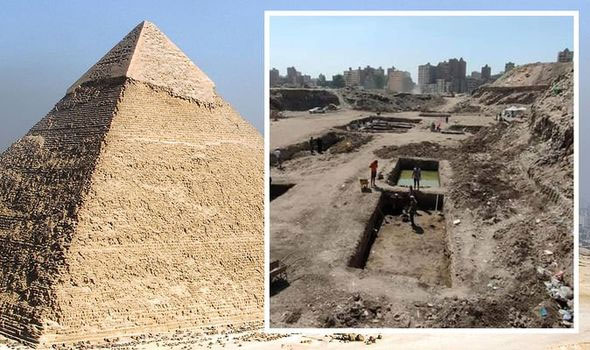Egyptian archaeologists have discovered 2,400-year-old remnants in a large pharaoh temple, inscribed with strange writings.
The discovery was made by a team of Egyptian and German experts at the Matariya archaeological site in Heliopolis. In ancient times, Matariya was part of Heliopolis, the capital of Lower Egypt and a major religious center. The found blocks and fragments are made of basalt and are believed to belong to the west and north sides of the temple of King Nectanebo I. The research team believes this may also be an extension connecting the sanctuary with the main axis of the sun god, Amun-Ra’s worship area.

Archaeologists have made a surprising discovery in Egypt. (Photo: Getty)
Ayman Ashmawy from the Supreme Council of Antiquities of Egypt stated that the hieroglyphs inscribed on the blocks refer to the 13th and 14th years of Nectanebo’s reign (around 367-366 BC). He told Ahram Online: “The blocks are unfinished and seem to have been abandoned after the death of Nectanebo I in 363 BC.” He added that these structures likely date back to the time of Ramesses II (1279-1213 BC), Merenptah (1213-1201 BC), and Apries (589-570 BC).
The research team also discovered a statue of a baboon, a base, and a portion of a quartz obelisk, all dating from the reign of Pharaoh Osorkon during the Middle Kingdom (925-890 BC).
Additionally, a temple dedicated to the god Shu and the goddess Tefnut, built by King Psamtik II, who reigned from 595 to 589 BC, has also been excavated.
The oldest discovery is an altar of Pharaoh Tuthmosis III from the 15th century BC.
The Thirtieth Dynasty was the last dynasty before the Egyptian empire came under Persian control until it was taken over by Alexander the Great in 332 BC. King Nectanebo spent much of his reign resisting the Achaemenid Empire from Persia. He commissioned many constructions throughout the empire, including a temple of Isis on Philae Island near Aswan.


















































